can you thin them, like if your going to use it for a wash, with De natured alcohol?
I used to know the answer, but its been so long since ive done it.
thanks
can you thin them, like if your going to use it for a wash, with De natured alcohol?
I used to know the answer, but its been so long since ive done it.
thanks
I’ve had no success with using tamiya paints as washes. but denatured alchohol works well as a thinner (i’ve heard)
For washes, thin Tamiya with just water. if you want to do a “Sludge Wash”, add dishwashing detergent to the mix until it is of thick consistancy, hence the term. This has worked very well for me as my primary technique. If you make a mistake you can wash it off and try again without harming underlying color coats and finishes.
I tried that a couple days ago and it wouldn’t mix. I mean it seperated, and you could clearly see that the paint was severly affected by something. I used Model Master acrylics right after that with success, and I used the same soap, same everything. Is there a certain type of soap you use for your sludge washes with Tamiya paints Plasticmod?
Tamiya paints are alcohol based. Isopropyl alcohol works best as a thinner. If you want to use Tamiya paint as a ‘sludge wash’ you need to thin the paint with distilled water and then add one or two drops of dishwashing soap. All the soap does is reduce the sticking power of the paint allowing it to be wiped off later with little effort.Too much soap and it will turn into goo. You could use iso. alcohol to thin the paint for a wash, but it very well may strip the base coat. It will eat into future floor polish also.
Hope this sheds some light your way.
Drew
Generally speaking it’s not a good idea to use acrylics for washes because the stains have a tendency to look great when wet but uninspiring when dry. It’s better to paint the model with acrylics or with enamels topped with a coat of Future (acrylic). Then you apply oil based washes thinned with turpentine or mineral spirits. High quality artist oil paints are probably best for washes but modeling enamels work too.
I’ve used artist oils for weathering oil stains, drips, etc. and faces on figure models, but I’ve never tried it for a wash. I’m building my first tank and I used Tamiya acrylic to paint a grimy-black-blue base coat on the tracks. My next step is to apply a rust-red-brown wash and I was planning to use the same paint thinned with Tamiya thinner for the wash (based on articles I read), but your comment made me think oils might be better. Would you use an oil wash for this purpose, and if so, would you apply it thick or thin? Once an oil wash is applied, how is excess removed? I’m assuming it takes forever to dry… Any tips would be appreciated.
TomB
I use Tamiya’s own thinner for their acrylics, it has a retarder and works well. As a wash, I too stay away from acrylics and use a oil wash. I tried to use wash sparingngly and not use the sludge method. Drying is not really that much of a problem as the amount of pigment is really small. I can wipe away excess within 15-30 minutes, the wash will cure within a day or so.
Tom
I use an oil wash over a Future finish and I’ve really liked the results. Experiment with the oil to turpenoid ratio and be patient because I get my best results after 3 or four applications. I let each wash application dry overnight (at least). I wipe off the excess with either a clean brush or Q-tip. Oils are very forgiving because they give me plenty of time to fudge around because of their drying time.
Here’s an example of the details brought out with an oil wash:
I wouldn’t agree that acrylics are not a good idea for washes. Having used both enamels and acrylics for washes, I have found that acrylic washes are near fool proof. They are easy to mix, easy to apply, completely enert over enamels and thouroughly cured acrylics with a gloss coat. Like enamels, a myriad of complementary colors can be mixed for the wash and they dry much faster than enamels. Acrylic washes also remove extremely easy with plain 'ol water. The only real difference between enamels and acrylic washes (and it’s a big plus) is that if the modeler is unsatisfied with the color, effect or what-have you- simply wipe the wash off with a clean lint-free cloth dampened with water and start again. This can be repeated over and over again without concern for what mineral spirits or other patrolium-based thinners can do to the underlying model surface. I’ve used acrylics for washes for hundreds of finished models, and onlookers could have swore they were weathered with oils. “To each his own”, as they say, but for me, with numerous first-place awards later…acrylics are the ticket. Not knocking enamels or oils, as I use them for special situations…just a friendly disagreement. Happy modeling!
Several of my 1/72nd scale models weathered with an acrylic wash
F/A-18E Hornet
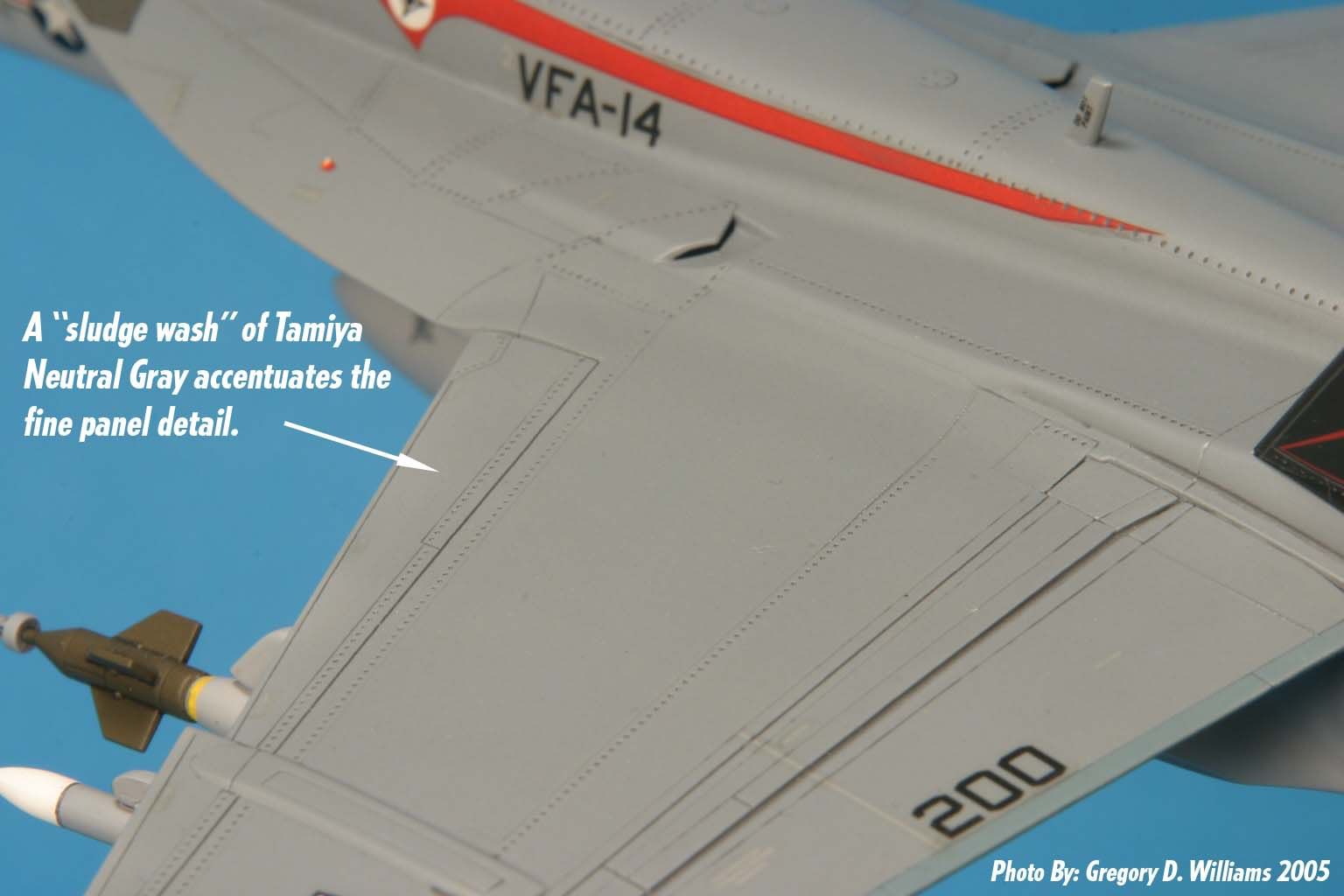
F-14B Tomcat
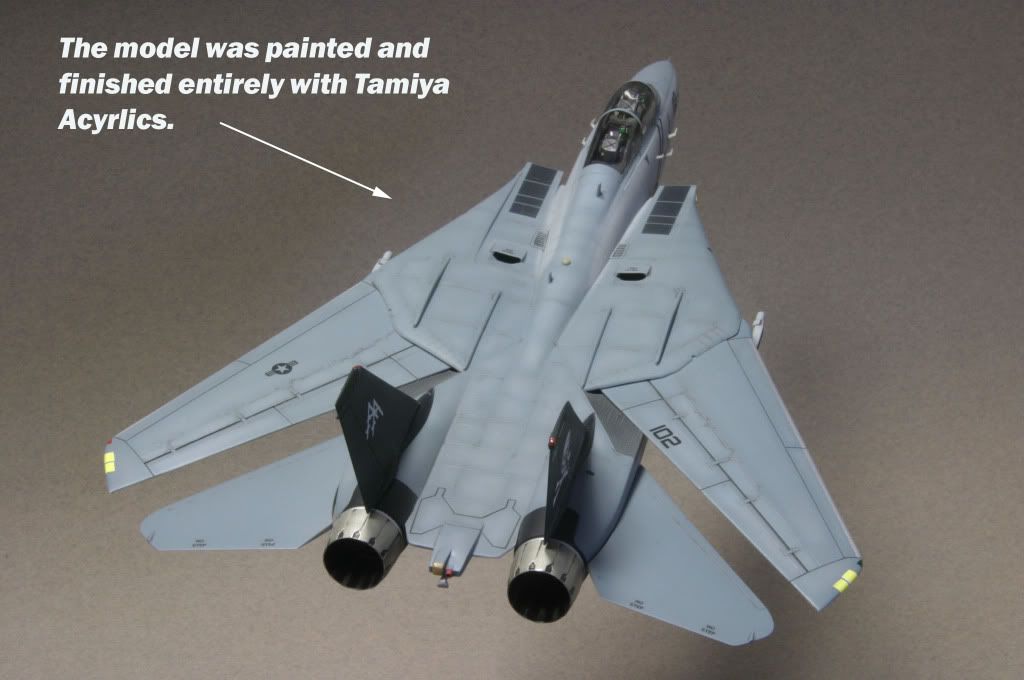
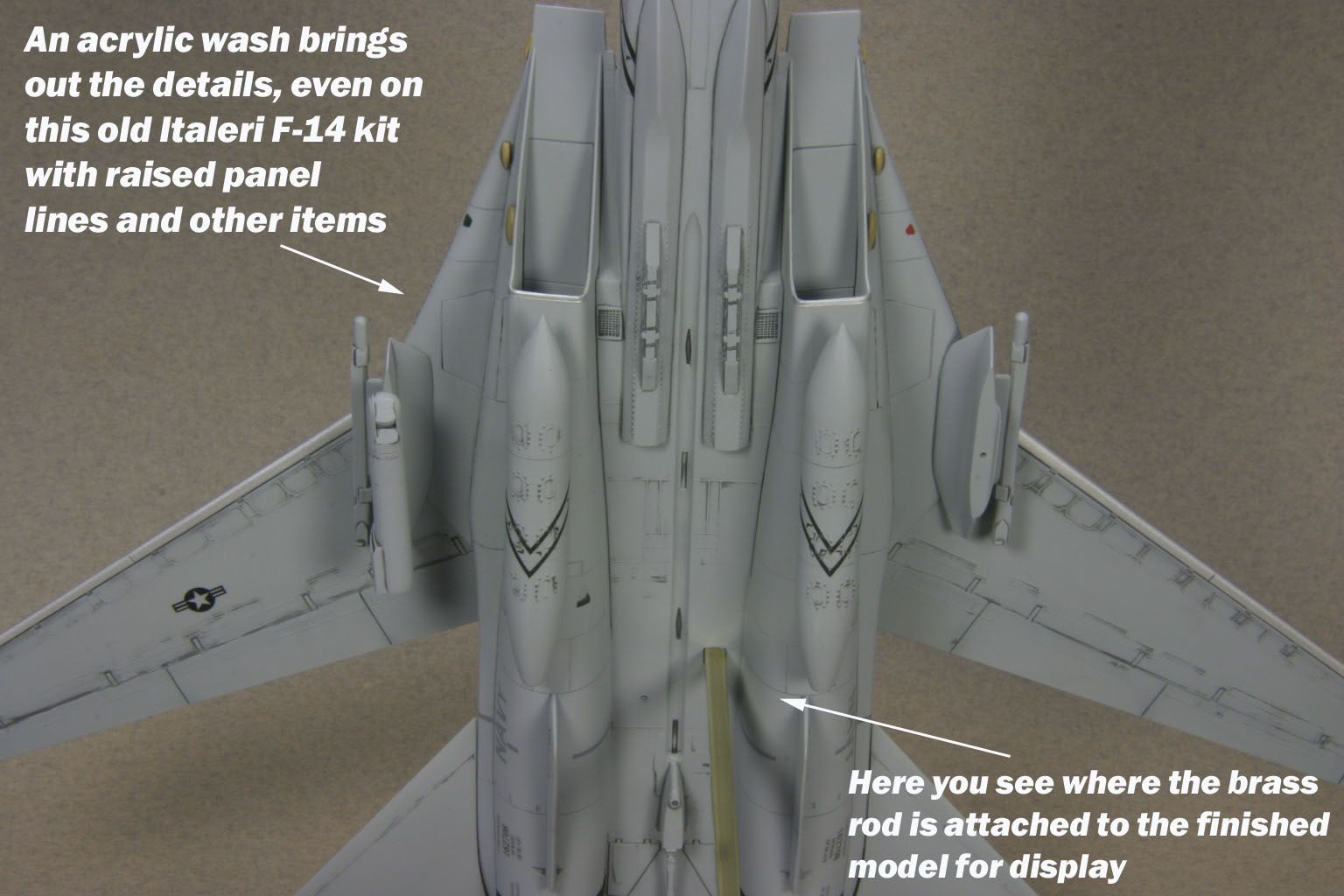
T-45A Goshawk
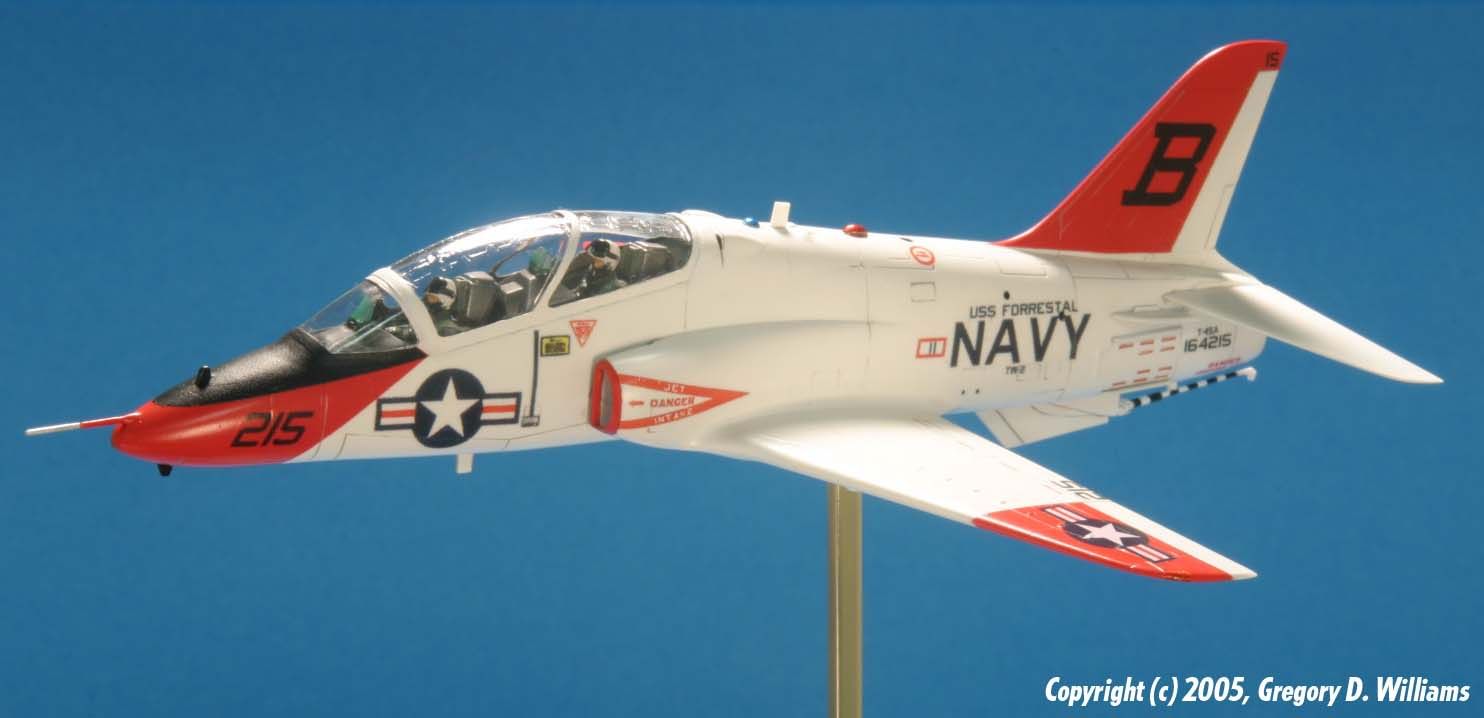
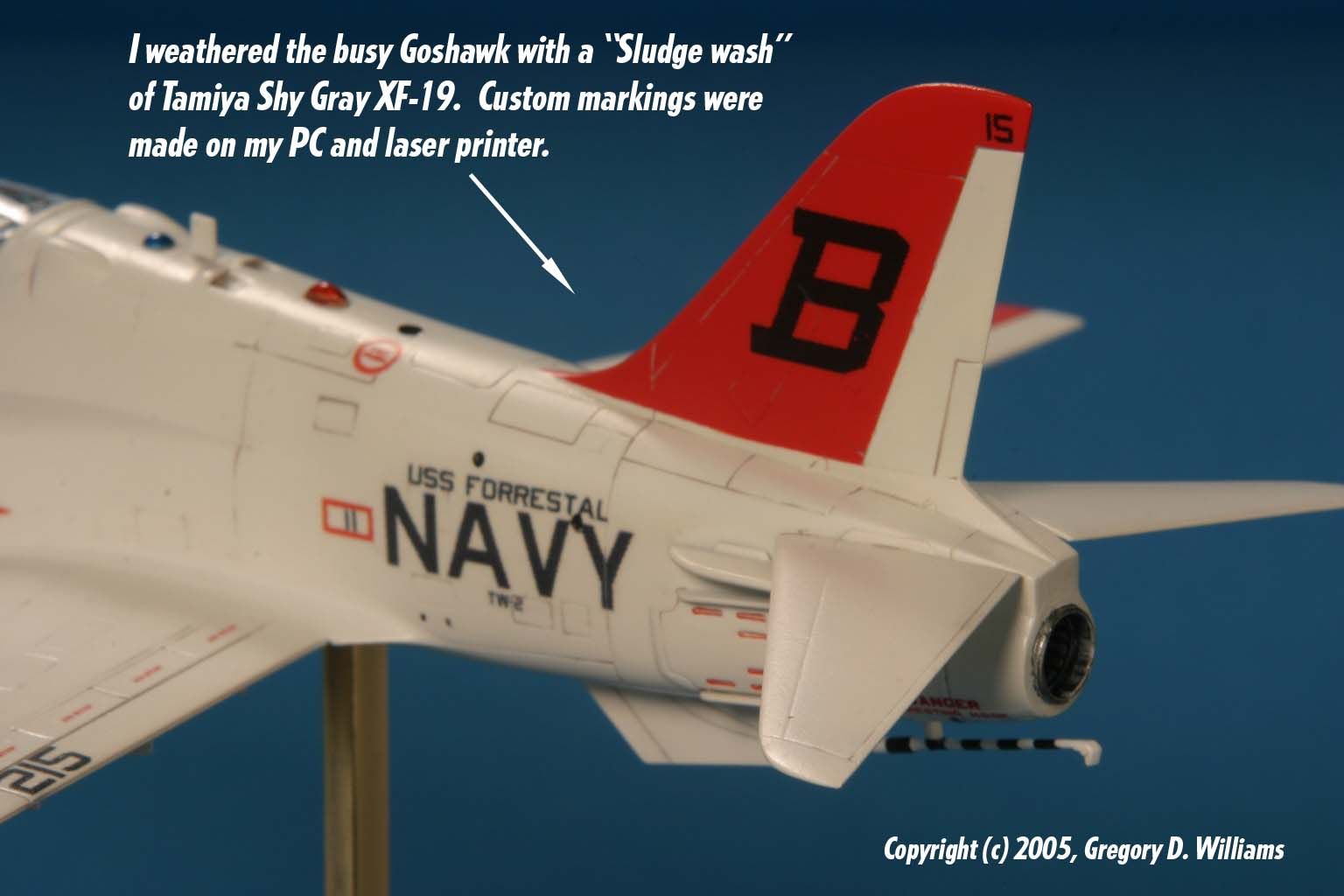
Hey all!
See my posting in the Armor section- under the posting for the M-20 (which is a super detailed job by the modeler ) I have written extensive techniques on weathering and related subjects.
johncpo
Greg, what’s the recipe for your acrylic wash? What do you use to thin the paint?
-dave
I start with a few drops of Tamiya color mixed to the desired shade. Then I add approx. 10 drops of distilled water the the paint. Next I add a generous amount, approx 20 drops of dish soap and stir until it reaches a sludge consistancy. I apply the wash with a paintbrush, and I’m off! In the photos below, I’m using Clear Smoke, X-19 as a sludge wash for the landing gear struts and wheel wells, for a 1/72nd scale F-14A.
Mixing up the Tamiya wash

Applying the wash with a regular paint brush
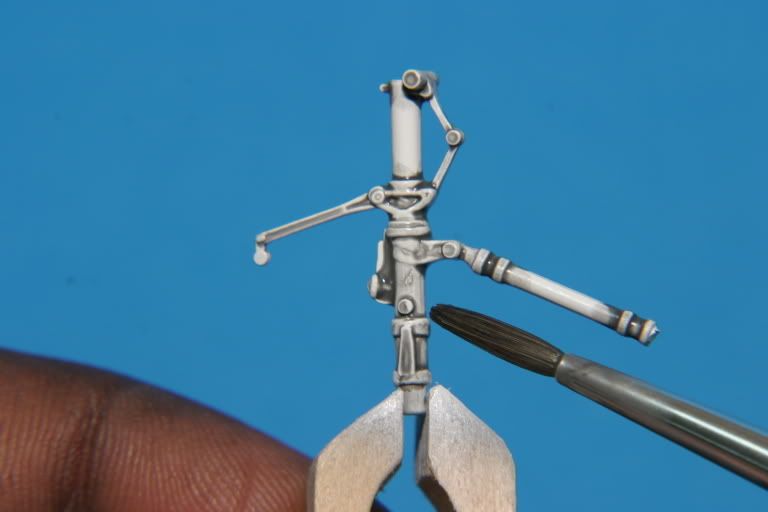
I used slightly moistened cotton swabs to remove excess dried wash from selected area for the effect, and I sealed the wash with clear flat or gloss
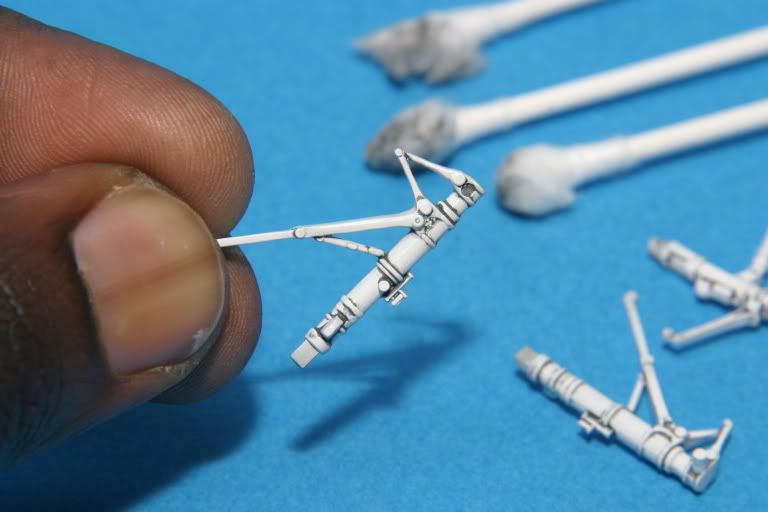
My dad tipped me about using window wash for cars to thin acrylicpaints. I’ve been using this since and it works well. I was worried about the blue colour but it doesnt change the colour of the paint. At least i can’t see it… The best of all it is supercheap. I payed about 1 1/2 dollar for a five liter can…
Svend-Erik